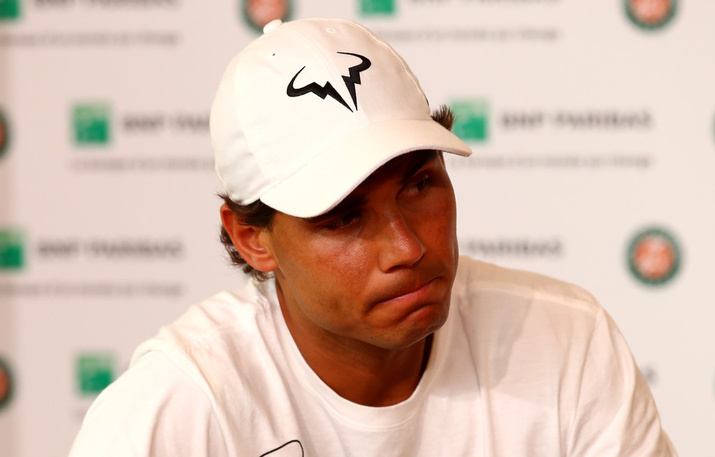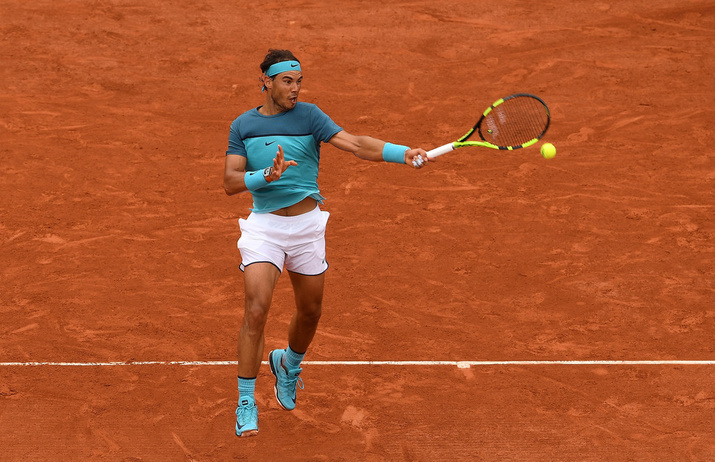Don't miss any stories → Follow Tennis View
FollowKings of Clay: Contrasting Rafael Nadal with Bjorn Borg
Rafa Nadal may no longer be in contention for his 10th title at Roland Garros, but he will achieve another milestone in June – his 30th birthday. Father Time has reared his head all too soon. Once again, the increasing fragile and unpredictable Spaniard was compelled to withdraw from a Grand Slam event due to injury.

In 2014, on the eve of the US Open, it was the right wrist that prevented the chronically injured Nadal from competing. This time, however, in Paris, it would be the left wrist. Nadal’s sudden withdrawal from the French Open prior to his third-round match brings to mind another abrupt departure. However, this was from the sport altogether and by the original king of clay, Bjorn Borg.
The Swedish superstar and 11-time Grand Slam champion shocked the tennis establishment in 1983 when at age 26, he packed his racquets for the last time. Nadal at the same age was ranked No. 4 in the world and had just secured his seventh French Open title (surpassing Borg’s record of six) and 10th overall Grand Slam championship.
Nadal and Borg, born 30 years and three days apart, initially appear quite similar, and I often wondered how they would have battled on the terre battue had they been peers. On closer inspection, however, marked contrasts emerge.
Many have christened Nadal the undisputed king of clay with 49 titles on the dirt (out of 69 overall), including nine at the French Open, but is this an accurate depiction? How much of Nadal’s success and dominance on this surface is predicated on his playing left-handed despite being right-hand dominant?
Nadal’s coach and uncle, Toni Nadal, encouraged Rafa to play left-handed because he was convinced this would confer a huge advantage against most opponents, especially those with one-handed backhands. In addition to his heavy topspin and lefty forehand, his serve should have developed into a reliable weapon, but it never quite materialized and historically has often been a liability. Nadal invests considerable time and energy in running around his backhand so that he can hit inside-out forehands from the right side of the court. The extra running and maneuvering required to repeatedly execute this tactic probably has contributed to the plethora of injuries he has endured throughout his career. An opponent who can consistently thwart this tactic will pose a substantial challenge to Nadal, particularly on clay, since the slower surface provides more time to execute this strategy.
One could argue that Borg would have amassed more Grand Slam titles, especially at Roland Garros, had he not prematurely retired. Conversely, it is equally plausible to suggest he would have never won another had he continued to play, since he was undeniably mentally exhausted and perhaps even tormented.

The tennis establishment has repeatedly proclaimed that Nadal’s feat of winning nine French Open titles between 2005 and 2014 is one of the greatest accomplishments not only in tennis but in all sports. I contend, however, that Borg’s ability to successfully transition in just two weeks from the slow red clay of Roland Garros to the fast, slick lawns of the All England Club and win the French Open and Wimbledon in three consecutive years (1978-1980) surpasses any other achievement in tennis history.
While it is futile to compare players from different eras utilizing radically dissimilar equipment on considerably altered surfaces, it is possible to evaluate them in terms of technique, playing style, mental fortitude, and fitness. I would assess Borg on all counts as a superior player to Nadal, and had they played during the same era, although their matches would be competitive, I think Borg would prevail most of the time on all surfaces, including red clay.
Nadal’s laundry list of physical injuries is well documented. He expends an enormous amount of physical as well as mental energy with each stroke, and this has taken a severe toll on his body over the course of his career. In contrast, Borg never suffered a debilitating or chronic injury during his time on tour. While Nadal is quick around the court, Borg’s footwork is exemplary and effortless. There is nothing effortless about Nadal’s technique or approach to the game. This is his Achilles’ heel.
Borg possessed an extremely effective serve, which he often followed into the net, especially on grass. His heavy topspin forehand and backhand were equally powerful and consistent, and his mental focus was unparalleled.
My intention was to write an article depicting a hypothetical duel between two of the game’s greatest clay-court champions. At this year’s French Open, Nadal seemed destined to meet Novak Djokovic in the semifinals – not retire in the third round with a serious wrist injury. Consequently, the question is no longer how would Nadal compete against Borg, but how much longer will his fragile body and psyche permit him to play?










